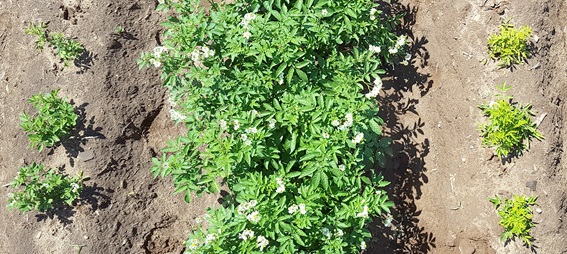Menu
Research
POTATO IMPROVEMENT VIA GENETIC MAPPING AND BIOTECHNOLOGY
Potato is the third most important food crop in human consumption, next to rice and wheat. Our lab is interested in developing new potato cultivars by discovery and manipulation of genes associated with key agronomic traits. We are investigating physiological traits such as tuber size and tuber sprouting, and traits associated with potato processing quality, including cold-induced sweetening (Zhu et al. 2016, Plant Biotech. J. 14: 709-718). By implementing state-of-the-art genetic mapping approaches, our group has identified several candidate genes associated with these traits. We are currently in the process of validating the functional roles of these candidate genes. Allelic variation at critical agronomic genes, especially in wild Solanum species, provides an important resource to improve modern cultivars. Our lab is actively exploring the extent, function, and influence of these natural variants and their applicability towards crop improvement in potato. The genetic and genomic information harbored within these genes will be essential for future breeding and genomic selection efforts. Our group utilizes cutting-edge technologies, such as CRISPR/cas, to generate sequence variants within potato genes, which can supplement natural variants and even create novel allelic combinations. In parallel, we are developing enhancers maps under various stress and developmental conditions. One of our long-term goals is to combine tissue-specific and stress-inducible enhancers with important potato genes, allowing us to improve the agronomic performance of potato under any given environmental condition.
